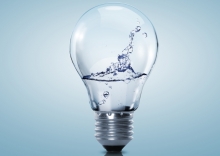- Research
Issue:
The US Environmental Protection Agency has announced the winners of the first phase of its competition for promising affordable technologies for the recycling of agricultural manure.
The aim of the agency’s Nutrient Recycling Challenge is to support the development of technologies able to recycle the nitrogen and phosphorus in manure into fertiliser products, at the same time offering the prospect of reduced water pollution through better management of these nutrients.
The EPA says it received 75 concept papers from around the world. From these, it selected 34 that will continue to the second phase of the challenge. It announced at the end of March that it was awarding a $6000 cash prize to each of four winning concepts at this stage, with another six deserving a special mention and receiving $1000 each.
The second phase of the challenge involves the preparation of designs based on the 34 concepts selected to go forward, which will take place in the middle of this year. A third phase will cover prototypes and proof of concept, followed by a fourth phase with farm-based pilot demonstrations of the final group of finalists.
One of the winning concepts was provided by a group from the University of Minnesota. This is proposing the use of a novel anaerobic sequencing batch electrode-assisted reactor in a process dubbed AnSBEAR. This incorporates anaerobic digestion, electrocoagulation, crystallisation, solid/liquid separation, and solid drying and packing. Following anaerobic digestion, the nutrient-rich supernatant will be treated in a two-step electrocoagulation process to precipitate ammonium and phosphate. According to researchers, the aim is for the process to recover around 80% of the nitrogen and phosphorus, and the treated water can be used for irrigation.
Another of the winning concepts came from Centrisys Corporation and cnp Technology Water and Biosolids Corp., whose AirPrex technology is used for removal and recovery of the phosphorus compound struvite in municipal wastewater operations. The concept is to apply the technology for the recovery of nutrients from livestock manure. Struvite formation is affected by pH, and the AirPrex technology uses stripping of carbon dioxide as the means of changing the pH.
The winning concept from Israeli company Paulee Cleantec Ltd proposes using an inexpensive chemical oxidant to convert waste into fertiliser. Use of a potassium-based oxidant adds this element to the finished ash product. According to the developer, the system can either operate as a static system or as a mobile system on a truck. It can also handle lagoon sludge and digestate from biogas facilities.
The fourth of the winning concepts is from Bravespec Systems of Uganda. This concept uses a rotating cone-shaped acceleration plate to create conditions to separate solids and liquids, with collection of the separated parts made possible by the direction of travel of the liquids being altered by the Coanda effect. The system can remove solid particles down to 0.05mm in diameter.
Announcing the results, EPA pointed out that livestock producers manage more than a billion tons of animal manure each year. It launched the Nutrient Recycling Challenge in November 2015 in partnership with pork and dairy producers, the US Department of Agriculture, and environmental and scientific experts. The goal of the challenge is to find affordable technologies that can help farmers manage nutrients, create valuable products and protect the environment.
‘The Nutrient Recycling Challenge is a great example of EPA partnering with farmers to find solutions that benefit everyone,’ said Ellen Gilinsky, senior policy advisor for the EPA’s Office of Water. ‘Through competition, together we are driving innovation to achieve environmental results.’
Keywords:
- USA, resource recovery, nutrients






